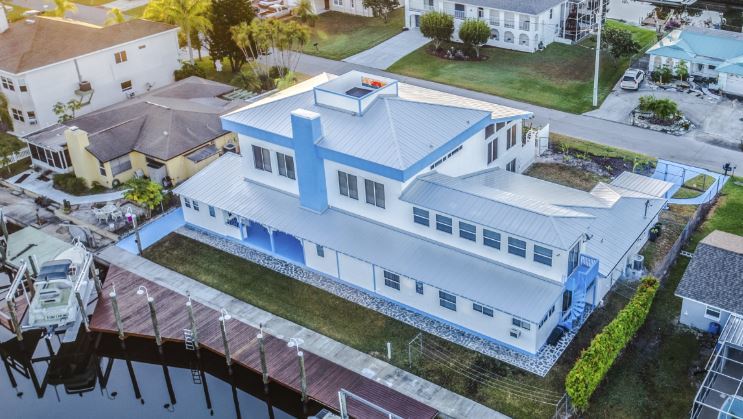What You Should Know About Coating Foam Roofs

By Western Colloid.
Foam roofs are popular on low-slope roofs for many reasons, including the additional insulation they provide.
Foam roofs do require some ongoing maintenance but the featured benefit is that they provide an additional layer of insulation. Plus, certain foam roof products are even ENERGY STAR®-rated, which can help reduce ongoing heating and cooling costs for your building.
A foam roof maintenance program should include regular inspection and repair as needed. While foam roofs can last 25 years, periodic recoating will keep the roof in good repair and let the owner enjoy all the benefits of an effective and energy-efficient foam roof system. Foam roofs should be recoated every 5-10 years, depending on the quantity and quality of coating previously installed.
Common foam roof problems include:
-
Weather damage
-
Bird droppings & pecking.
-
Hail damage
-
Delamination
-
Water intrusion
-
Fading
-
Peeling
Although the entire roof system can last more than two decades, the foam roof coating will deteriorate over time, since it is exposed to the elements. Weathering can form small pits in the coating as it ages. The process is gradual and may not be immediately visible, but if the pit becomes a hole where water can enter, the whole roof will need to be replaced.
Pre-Coating Inspections
Before you begin recoating the foam roof, a thorough inspection of the whole surface is required. This includes a visual inspection for obvious cracks, peeling, ponding or staining. In particular, have a look around HVAC units, exhausts or anywhere a joint or cut was made, as these will typically be the weakest points and most susceptible to damage.
Once the visual inspection is complete, a more in-depth inspection, using an infrared scanner or FLIR camera, may be required to identify ‘hot spots’ where insulation is failing or where water has entered the building. Test cuts may also need to be made to make sure previous layers of foam roof coating are still adhering and maintaining air- and water-tightness.
Foam Roof Repair

Once the full inspection is complete, but before recoating can take place, you need to complete any necessary repairs. This can include patching splits and blisters with a product like Western Colloid Elastic Cement and removing any out-of-use equipment. The cleaner the foam roof system is, the more resistant it will be to future weather and environmental damage.
If water damage or water intrusion is discovered, you may need to remove and replace whole sections of the roof or even the entire roof system. Once the damaged material has been removed, give the area sufficient time to dry before sealing to prevent further damage and limit the potential for mold growth.
When repairing the foam roof, choose a foam kit, roof cement, flashing compound or elastic cement that is compatible with the foam roof coating and other roof system materials. Give patches and repairs sufficient time to cure and ensure new seals and seams are water-tight before you start recoating.
Foam Roof Recoating

Before applying a new coating, the first step is to remove any debris, thoroughly clean the roof with a blower and broom or a pressure washer. Suitable detergents can be used to clean off any grease or oil. Give the clean roof time to dry before applying the first layer of coating.
Products like Western Colloid’s Fluid Applied Reinforced Roofing (FARR) System can be used with BUR, Modified Bitumen, Single Ply, Metal Roofing, Sprayed Polyurethane Foam and gravel roofs.
Recoating should be done only under the right weather conditions. Consult product specifications or the manufacturer’s representative for the right temperature range for application.
Safety First

As with all roof work, safety needs to be carefully considered during all phases of the foam roof repair and recoating. Be sure to follow legislated safety procedures, as well as any specific roof safety protocols the facility operators may have.
Western Colloid’s FARR Systems have the added benefit of being water-based. They are non-toxic and harmless to the environment. A fume-free product is safer for the workers applying it and means that recoating can happen even while the building is occupied.
For more information on choosing the right foam roof coating, and how to properly maintain a foam roof system, visit the Western Colloid website.
Original article source: Western Colloid






















Comments
Leave a Reply
Have an account? Login to leave a comment!
Sign In